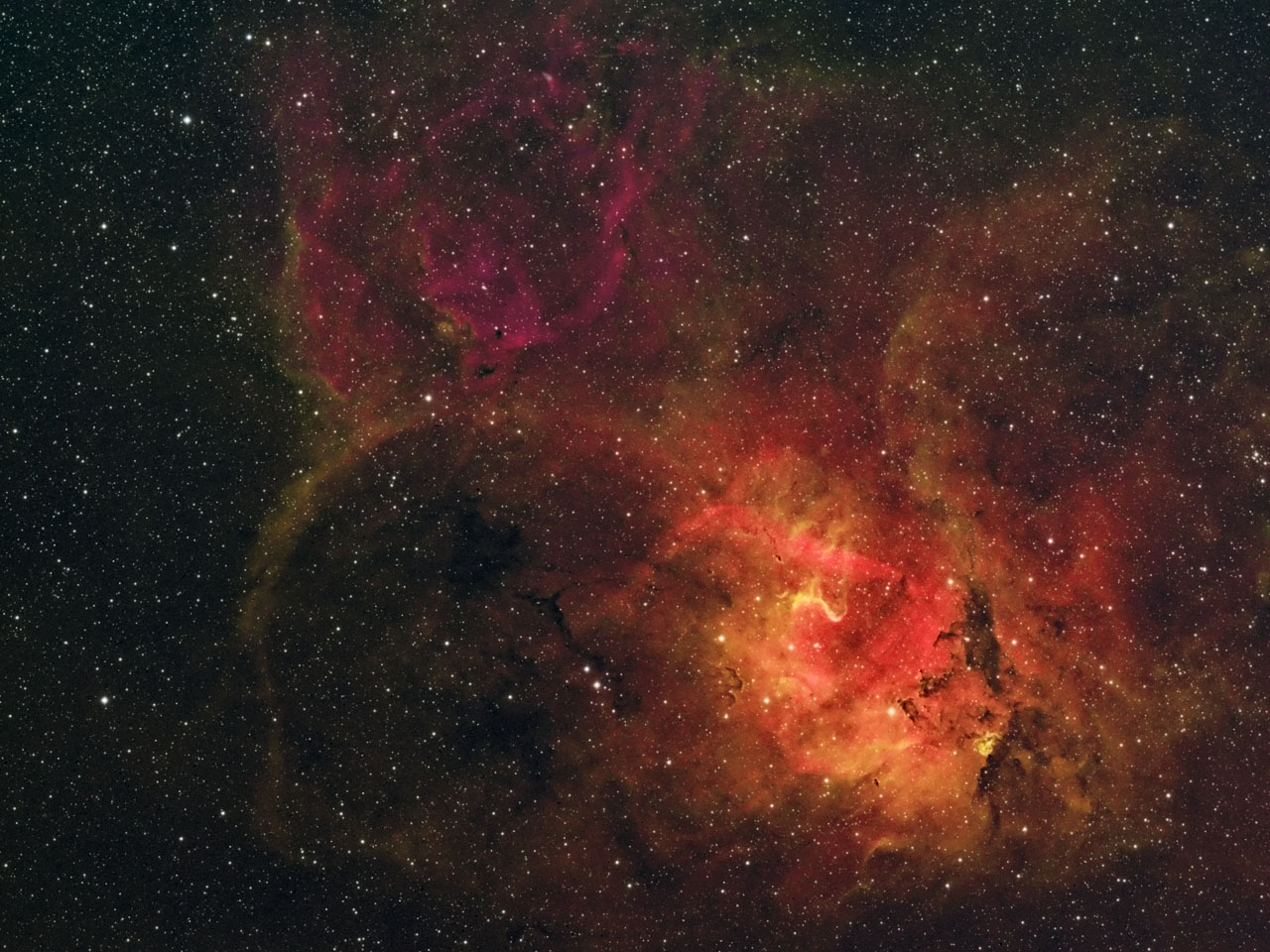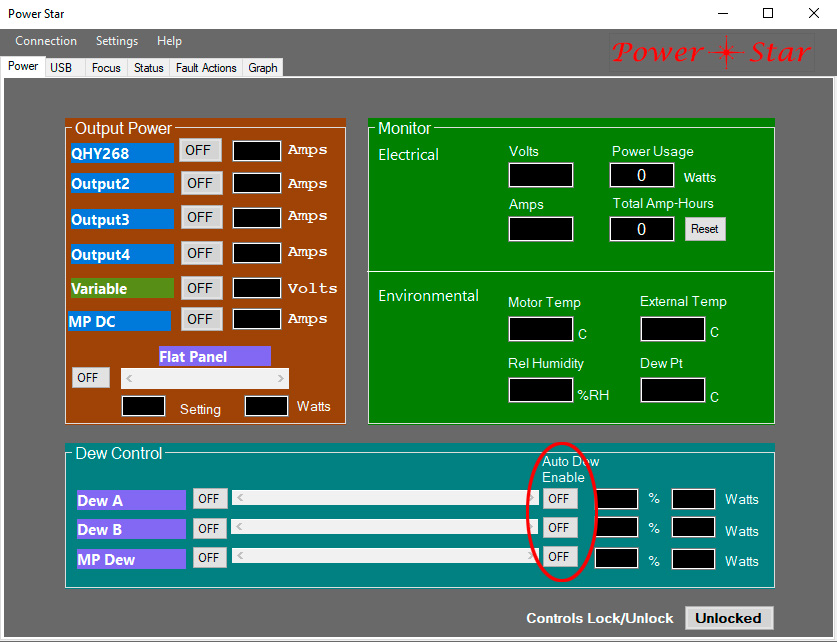Before getting into the latest edition of Pro Tips, I want to remind you of the nebula pictured above, Sh2-132. When I first shot this about 5 years ago I immediately saw a motorcycle and ghostly rider, which made me think of the “Ghost Rider” movie. Some people refer to this as the Lion Nebula (which I don’t see at all), but there is some disagreement about that name, so I’m trying to get it changed to the Ghost Rider Nebula. To that end I am re-shooting this, and plan to collect at least 20 hours.
Back to Pro Tips: This time I thought I’d share with you some of the shortcomings and problems I’ve found in using Power*Star (that’s right – it’s not perfect!). This was prompted by a query from a new customer regarding what appears to be a nasty fault that is actually just a common misunderstanding on the part of the user, having to do with the Disconnect button. While Power*Star is in the connected state it assumes that you are actively using it, so if there is a power failure this is treated as a fatal fault. All ports are turned off and the event is recorded in non-volatile memory so that it can be reported at the next start-up. In addition to reporting the event, the next start-up will skip the “auto on” step, leaving all ports, including switchable USB ports, turned off. This can be particularly bothersome if you are relying on the auto-on feature to turn on the computer used to talk to Power*Star. The reason all ports are left in the off state is that it could have been a short circuit on one of these ports that caused the original fatal fault, so turning it on again would just repeat the event. All of that is great when there is an actual power failure, but probably not what you want when you just end a session by turning off the power. The solution is to simply remember to always click the Disconnect button before killing the power. Note that Power*Star cannot always process a power failure correctly – it depends on how quickly the power goes down at the processor, which is a fairly complicated puzzle. But in my experience it almost always completes the process correctly, especially if it is triggered by turning off the power source.
Another flaw that has been annoying me lately is that the “auto dew control” feature is not remembered through a power cycle. You can enable a dew heater to turn on at power up, and it will even remember the power level you set, but it will not remember whether you enabled the automatic control function, always defaulting to disabled.
This means that at the start of each session you have to click the Auto Dew Enable button for each desired channel. Since this can be done through the ASCOM “switches” interface it is possible to have it done by a script in a 3rd party app such as NINA, but I just do it manually for each session. I’m not sure why this bug exists, as I remember addressing it during development, but I guess it didn’t “stick”.
The other “bug” (feature?) I want to share is something that I didn’t even realize until long after Power*Star was released: The switchable USB ports can be enabled for “auto on” at startup, and actually default to this state (I rarely turn them off). And at Disconnect you can choose to leave them turned on (by choosing either “Leave as is” or “Use Auto-On selection”). However, a feature of the USB hub chip used in Power*Star is that the state of the upstream connection is “passed on” to the downstream connections. This means that if the upstream (host) computer is disconnected or turned off, the downstream USB ports, both switchable and non-switchable, will be turned off. I haven’t yet seen a situation where this is a significant problem, but it is conceivable. For example, in an observatory environment you may have a USB device that you want to leave on at all times, but you don’t want to leave the host computer on. Generally speaking, a USB device is pretty useless if it can’t talk to its host, but there may be an exception, such a device that uses the USB connection just for power, so it doesn’t need to talk to the host. In such a case it should be possible to instead power the device using the variable voltage output (set to 5V) instead of a USB port. Unfortunately, I don’t know of any way to fix this without a hardware change.
If you know of any other “bugs” in Power*Star, please let me know, even if it is something trivial.

